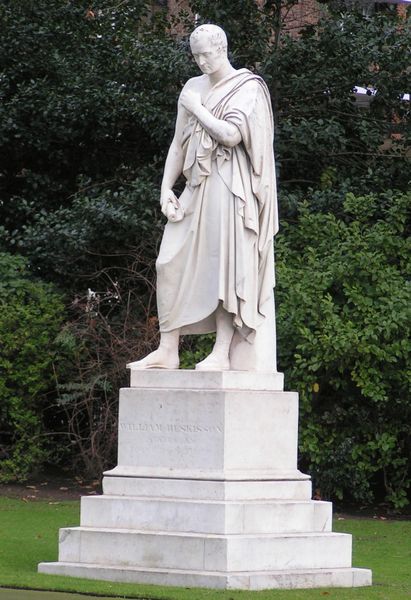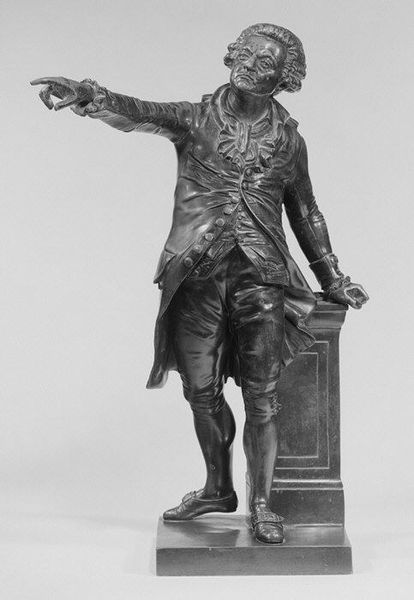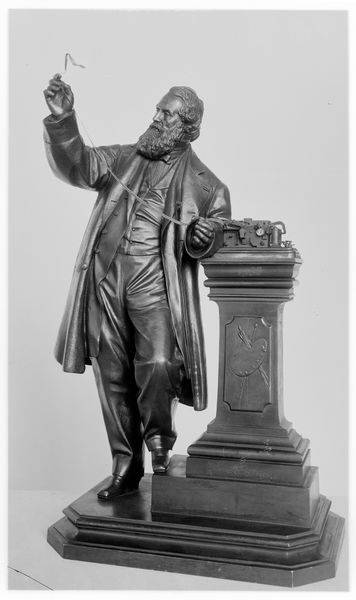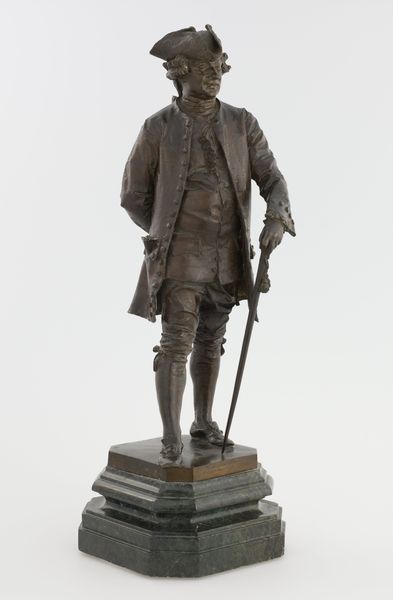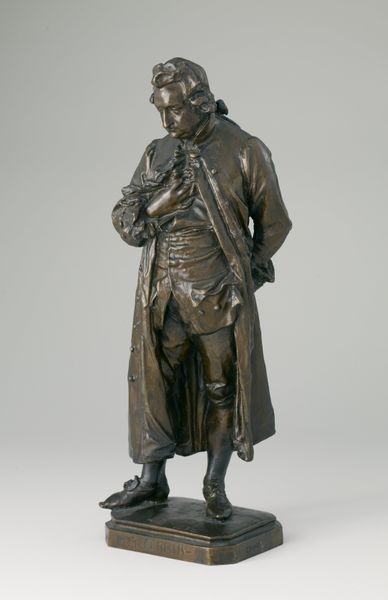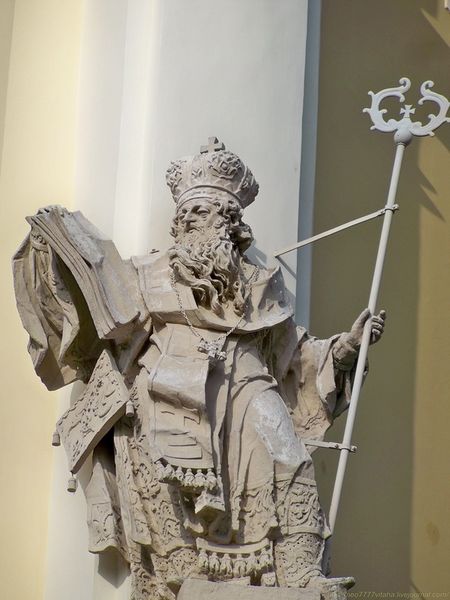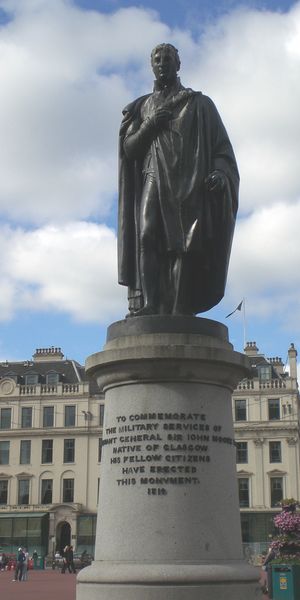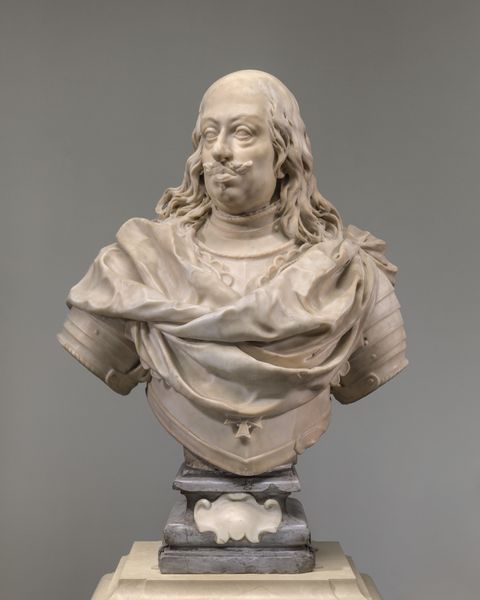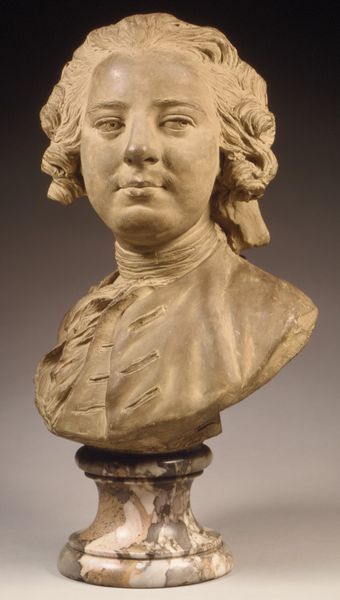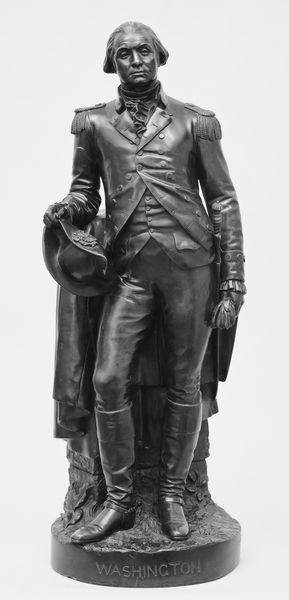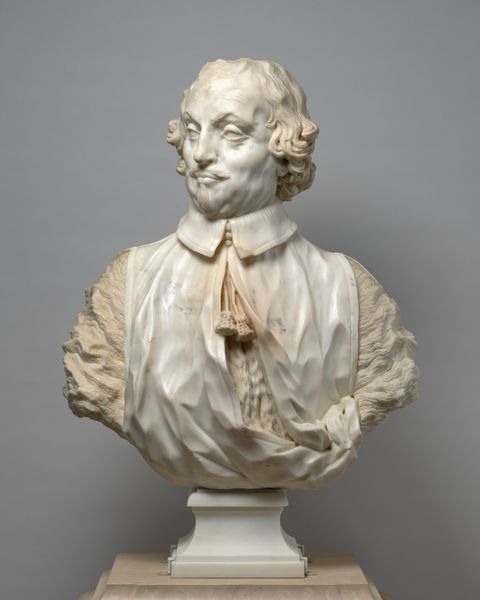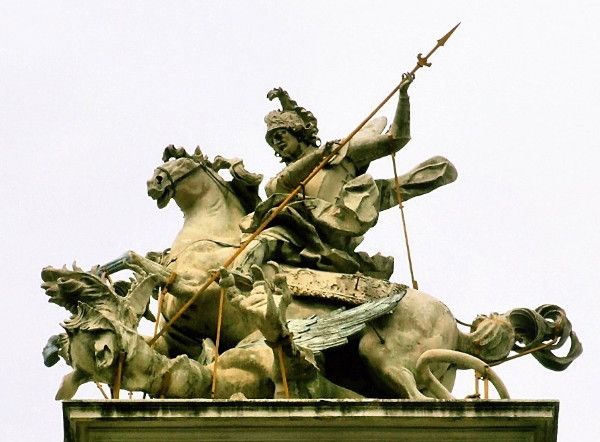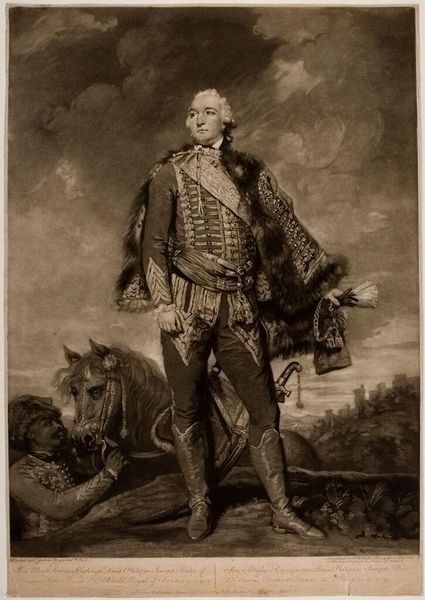
carving, bronze, public-art, sculpture
#
portrait
#
public art
#
carving
#
bronze
#
public-art
#
figuration
#
sculpture
#
academic-art
Copyright: Public domain
Editor: This is a bronze public art sculpture of “Monument A Antoine Watteau A Valenciennes,” by Jean-Baptiste Carpeaux. I’m struck by how dynamic it is for a statue; the figure almost seems to be in mid-stride. What stands out to you? Curator: The enduring power of artistic legacy! Watteau, even centuries after his lifetime, is granted this elevated, almost god-like status. Notice the way the sculpture, the symbol itself, is situated high above the viewer, demanding reverence. Editor: He’s holding a palette and brush. Is that significant? Curator: Absolutely! They’re not mere props; they’re potent symbols of creation and the artist's transformative power. He's eternally caught in the act of painting, perpetually generating culture. Does this sculpture reflect Watteau’s personal style? Or is this a generalization about an artist’s genius? Editor: I see what you mean! His clothes look similar to what you see in Watteau's paintings. It seems like it's merging the art with the artist in how he is perceived. Curator: Precisely. The statue, then, acts as a focal point for collective memory. It reinforces a specific, idealized narrative surrounding Watteau and his artistic output. Think about how public monuments serve as a continuous visual reminder and reinforce particular cultural values. Editor: So it’s less about historical accuracy and more about solidifying a certain image in the public consciousness. Curator: Yes, a monument speaks to the present as much as, if not more than, it speaks to the past. Editor: This conversation made me look at public art differently! I guess they carry greater significance. Curator: Exactly! It is the image, the artistic interpretation, not the factual depiction that persists and shapes our cultural memory.
Comments
No comments
Be the first to comment and join the conversation on the ultimate creative platform.

